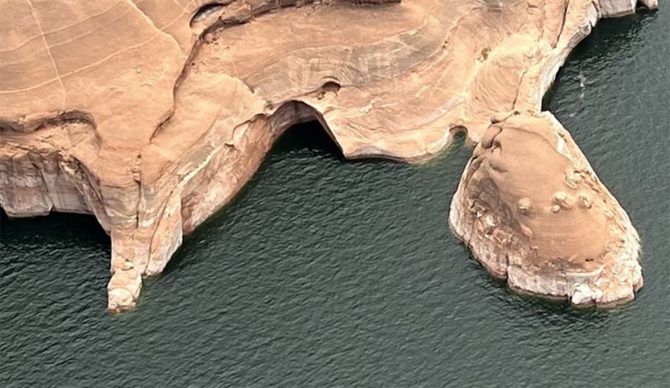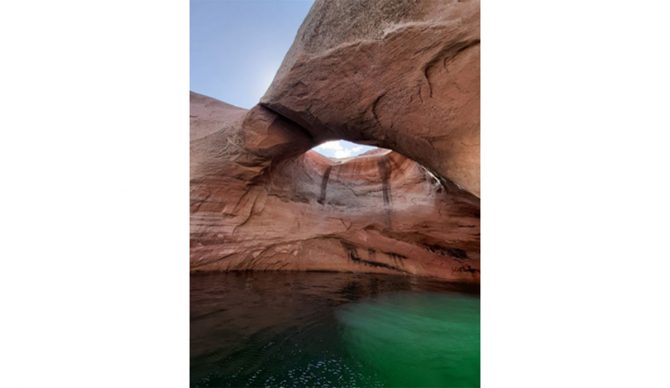
The famous Double Arch, picture here after the collapse, is no more. Photo: NPS
For millions of years, a natural stone arch stretched over a part of Rock Creek Bay in Glen Canyon National Recreation Area in Utah. On Thursday, August 8, the “Double Arch” collapsed.
Known as the Double Arch, the Toilet Bowl, Crescent Pool, and Hole in the Roof, the sandstone geologic feature was formed from 190-million year old sandstone. It was a frequently-visited site for tourists.
“Since formation, this fine-grained sand feature has been subject to spalling and erosion from weather, wind, and rain,” the National Park Service wrote in a press release. “Changing water levels and erosion from wave action is suspected of contributing to the ultimate collapse of the arch.”
No injuries were reported when the Double Arch collapsed, but it is a nudge to us that we need to protect the planet’s natural wonders.

Double Arch was formed from 190-million-year-old Navajo sandstone originating in the late Triassic to early Jurassic periods. Photo: NPS
“This event serves as a reminder of our responsibility and need to protect the mineral resources surrounding Lake Powell,” said Glen Canyon National Recreation Area Superintendent Michelle Kerns. “These features have a life span that can be influenced or damaged by manmade interventions. While we don’t know what caused this collapse, we will continue to maintain our resource protection efforts on Lake Powell for future generations to enjoy.”
Utah’s Glen Canyon National Park covers over 1 million acres and has more than a few famous landmarks within its borders. One of the most interesting is the Rainbow Bridge, which is up there with the longest natural bridges on Earth.

